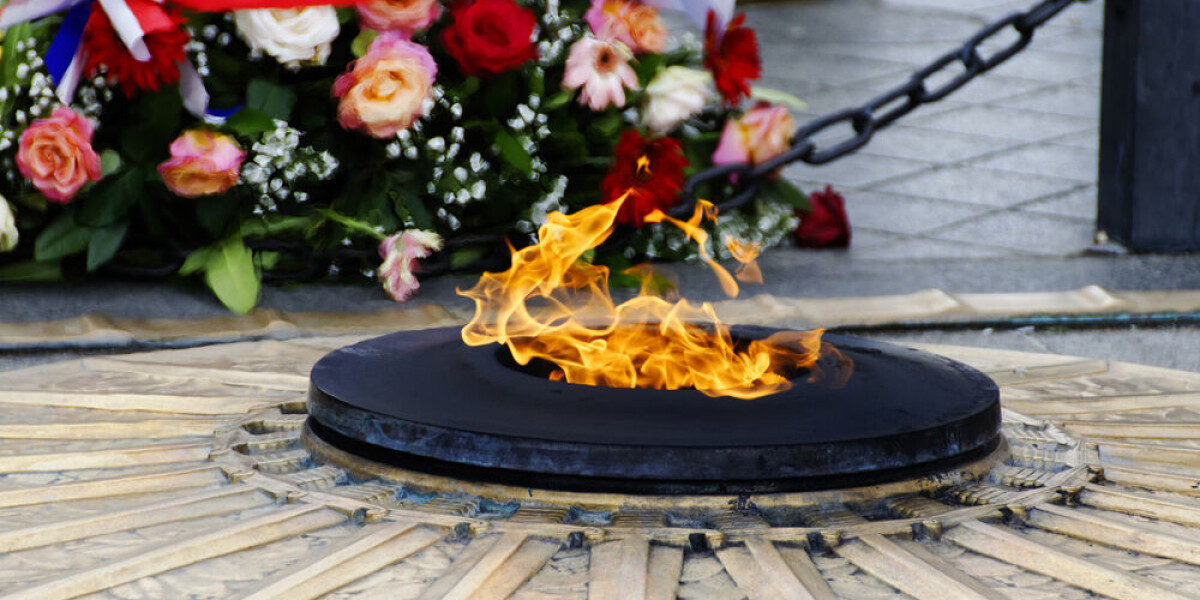
What is the history behind paris’ tomb of the unknown soldier?
- Select a language for the TTS:
- UK English Female
- UK English Male
- US English Female
- US English Male
- Australian Female
- Australian Male
- Language selected: (auto detect) - EN
Play all audios:

This Armistice Day, _The Connexion_ takes a look at the history of Paris’ tomb of the unknown soldier and the eternal flame which has been burning for 100 years. The first memorial services
took place on November 11, 1920, in both London and Paris. In France, the idea for _la Tombe du Soldat inconnu_ (Tomb of the Unknown soldier) came from Francis Simon, who was President of
_Souvenir Français_ in Rennes, an association created in 1887 to commemorate soldiers who died for their country. Mr Simon made his idea public in 1916, proposing that the body of a soldier
who died on the battlefield and who could not be identified would represent all of those who lost their life whilst fighting. It was reported widely in the press and adopted by Parliament
after the war, in 1919. CHOOSING A SOLDIER The Minister of Pensions at the time, André Maginot, who himself had been wounded in the war, used the underground fortress at Verdun for the
ceremony where the soldier would be chosen. On November 10, 1920, eight coffins of unidentified soldiers from eight different sectors on the front were laid out. A young soldier, 21-year-old
Auguste Thin, was given the honour of choosing the coffin – his father had died on the battlefield and he had voluntarily signed up in 1918. Mr Thin was given a bouquet of red and white
carnations to put on the coffin of his choice. He chose the sixth one, and later, explained why: “A simple thought came to me. I belong to the sixth division. If I add up the numbers of my
regiment, 123, that too comes to six. My decision was made. It would be the sixth coffin I passed in front of.” The next day the coffin was taken to Paris. LIGHTING AN ETERNAL FLAME When the
coffin of the sixth soldier - now the official Unknown Soldier - arrived in Paris the final resting had still not been decided. There was a ceremony in the Pantheon and the coffin was then
placed in one of the rooms in the Arc de Triomphe. It was not buried under the arch until January 28, 1921. In 1923, a journalist, Gabriel Boissy, suggested an eternal flame (also known as
the Flame of Remembrance) should be lit next to the tomb to the unknown soldier, so he should never be forgotten. On November 11 of that same year – 100 years ago today – it was lit by André
Maginot, and since that day it has never gone out. > Cette année 2023 est marquée par une célébration : les #100ans > de la Flamme du souvenir🔥 > > 🏛️Rencontre exceptionnelle à
cette occasion avec l'historien > Jean-Yves Le Naour ! > > *Jeudi 9 novembre à 19h30* > > Réservation➡️ https://t.co/stmzrquC67@leCMN @Paris >
pic.twitter.com/ET9Luo8bb8 > — Arc de triomphe (@ArcDeTriomphe) October 25, 2023 An association, _La Flamme Sous L’Arc de Triomphe_, made up of 150 veterans’ associations, was founded in
1925 to take it in turns to look after the flame. Each day, at 18:30, there is a procession under the Arc de Triomphe to ensure the flame lives on. A PATRIOTIC VIGIL TO BE HELD This year,
for the first time, there will be a vigil held during the commemorations of November 11, in order to mark the centenary of the first lighting of the Flame of Remembrance. This patriotic
vigil will take place this evening at 18:30, the time when the flame was first lit in 1923. The vigil "with sound and lights on the Arc de Triomphe" will last about 45 minutes and
is open to all. The Élysée has specified that flag bearers will be present. In addition to this vigil, President Emmanuel Macron will preside over the official ceremony at 11:00 on Place
Charles de Gaulle and under the Arc de Triomphe, speaking for a few minutes. The head of state will also take the opportunity to pay tribute, in the presence of their families, to the three
French soldiers who died for France in Iraq in August. THOUSANDS OF BODIES LOST For France and Britain, the nature of the war, where artillery shells accounted for 70% of the dead and
missing, meant that a high proportion of bodies were never found or never recovered for identification and burial. Both countries had systems of dog tags, (plaque d’identité militaire) from
the start of the war, but shrapnel and blast from artillery meant these were sometimes blown off. This meant that dead soldiers could not be identified if fellow soldiers from their units
were not around when their bodies were recovered. In the final count the French army had lost 1,400,000 soldiers, but only 960,000 were found to be buried. It is for this reason the idea of
a national memorial for the dead surfaced early in France and Britain, in 1916. RELATED ARTICLES REMEMBRANCE DAY: WHERE TO BUY YOUR POPPY – OR ‘BLEUET’ – IN FRANCE REDISCOVERED WW1 TUNNEL IN
FRANCE ‘STILL SMELLS OF GUNPOWDER’
